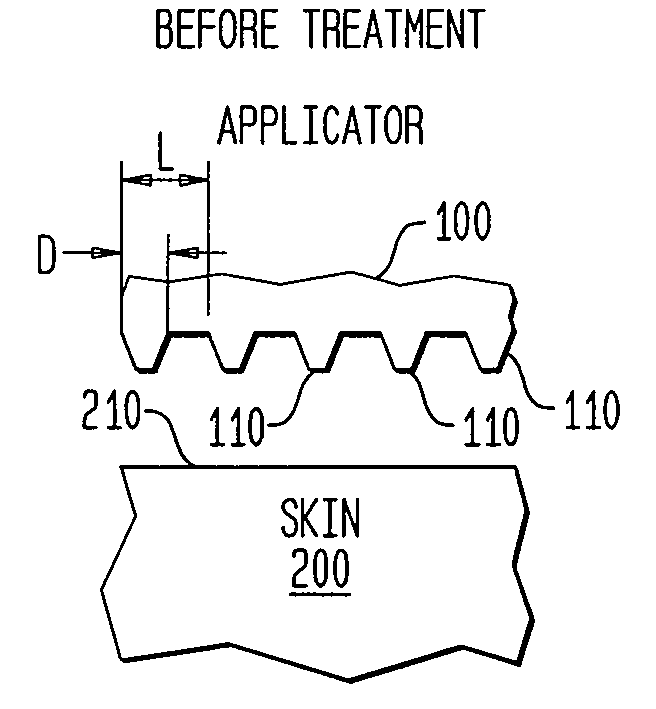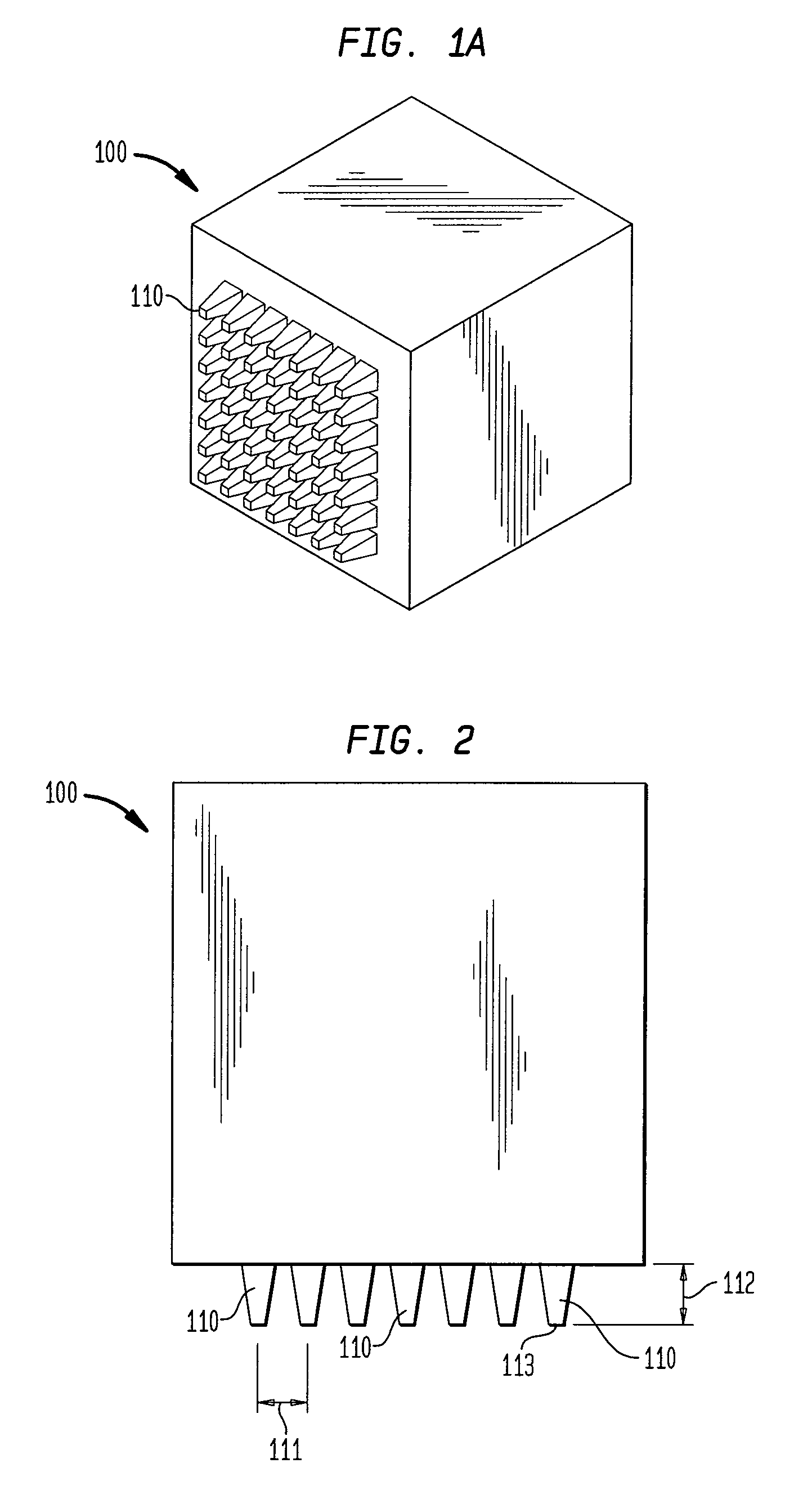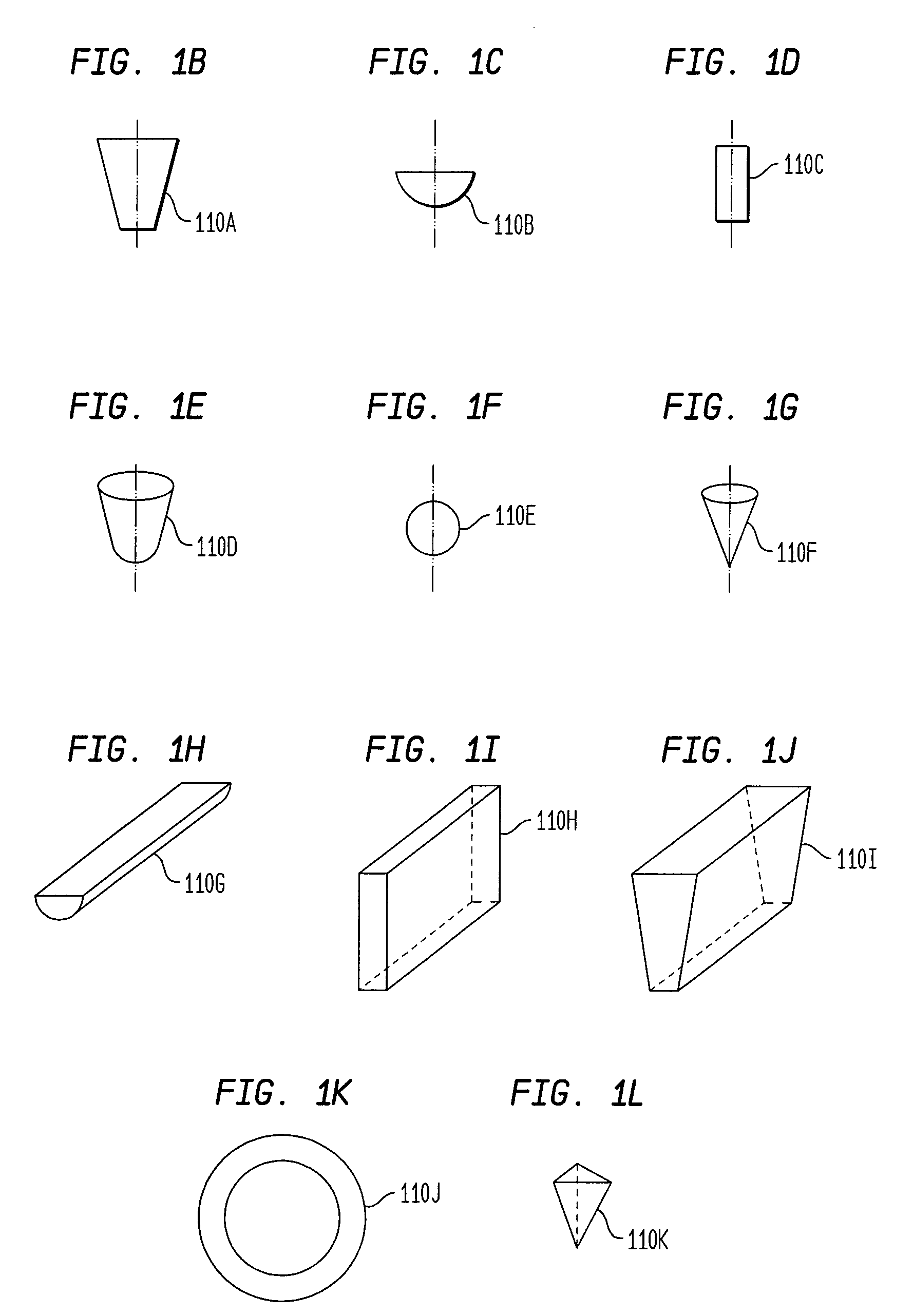Method and apparatus for treatment of tissue
a tissue and electromagnetic energy technology, applied in the field of tissue treatment, can solve the problems of unsatisfactory clinical efficacy of non-ablative procedures, unintended damage, more damage, etc., and achieve the effect of less energy, greater treatment effect, and less power
- Summary
- Abstract
- Description
- Claims
- Application Information
AI Technical Summary
Benefits of technology
Problems solved by technology
Method used
Image
Examples
example treatment 1
[0163]The effects of non-ablative (e.g., coagulative) and ablative injury and their importance in an immediate skin tightening reaction are difficult to observe during fractional skin resurfacing procedures due to inflammatory skin reactions.
[0164]In one embodiment, a human ex vivo tissue model was developed and used to quantitatively examine skin tightening advantages for combining fractional ablative and fractional non-ablative treatments. Parameters based upon results from the model were then used in a clinical study for facial skin rejuvenation. Facial skin from rhytidectomies was treated with fractional ablation using the Palomar® Lux2940™ micro-fractional handpiece the facial skin was also treated with non-ablative fractional treatment using the Palomar® Lux1540™ micro-fractional handpiece and / or the Palomar® Lux1440™ micro-fractional handpiece under controlled temperature and hydration conditions.
[0165]Tissue shrinkage was quantified as a function of depth and density of frac...
example treatment 2
[0169]In another embodiment, A new strategy to combine the coagulate damage from fractional non-ablative treatment with the ablative damage from a fractional ablative treatment was evaluated in an ex vivo model for skin shrinkage and in a clinical study for facial skin rejuvenation.
[0170]Facial skin from rhytidectomies was treated with fractional ablation using the Palomar® Lux2940™ micro-fractional handpiece the facial skin was also treated with non-ablative fractional treatment using the Palomar® Lux1540™ micro-fractional handpiece and / or the Palomar® Lux1440™ micro-fractional handpiece under controlled conditions.
[0171]Tissue shrinkage was quantified as a function of depth and density of fractional treatment. Safety, side effects, and effectiveness with a minimum of 3 month follow-up visits were evaluated in 18 patients for facial rejuvenation with combined fractional non-ablative and fractional ablative combined coverage reaching over 50%.
[0172]Skin tightening was observed in th...
example treatment 3
[0175]A 1540 nm fractional non-ablative device employed a point compression array (PCA) optic that enhances the depth of coagulation and reduces epidermal damage. Such deep non-ablative fractional treatments were combined with a groove pattern of fractional ablation using an Er:YAG laser to determine maximum tolerable coverage with acceptable side effects and healing time. The goal was to identify a single treatment strategy to rejuvenate and tighten lax skin on the neck.
[0176]The treatments consisted of multiple passes with a 1540 nm laser (i.e., a Palomar® Lux1540™ micro-fractional handpiece) equipped with a point-compression-array optic followed by multiple passes with a Palomar® Lux2940™ micro-fractional handpiece equipped with a groove pattern optic. The orientation of the parallel lines of ablation generated by the groove optic treatment was varied systematically. Subjects (n=12) received a single treatment coverage of 10-30% for each device. Safety, side effects and efficacy ...
PUM
 Login to View More
Login to View More Abstract
Description
Claims
Application Information
 Login to View More
Login to View More - R&D
- Intellectual Property
- Life Sciences
- Materials
- Tech Scout
- Unparalleled Data Quality
- Higher Quality Content
- 60% Fewer Hallucinations
Browse by: Latest US Patents, China's latest patents, Technical Efficacy Thesaurus, Application Domain, Technology Topic, Popular Technical Reports.
© 2025 PatSnap. All rights reserved.Legal|Privacy policy|Modern Slavery Act Transparency Statement|Sitemap|About US| Contact US: help@patsnap.com



